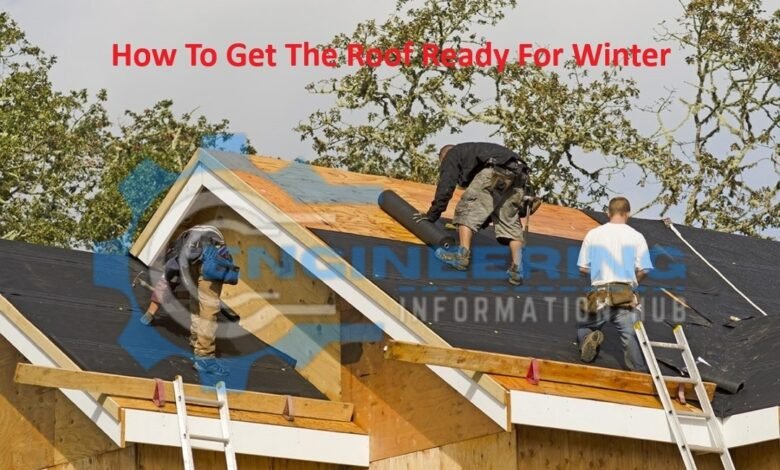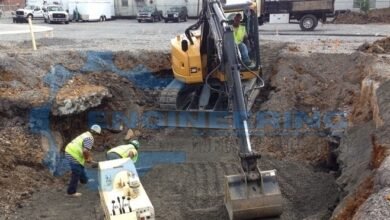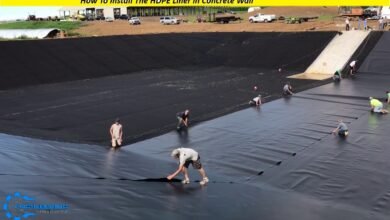How We Prepared The Roof Ready For Winter
The Roof Ready For Winter| How To Get The Roof Ready For Winter |How We Prepared The Roof Ready For Winter

How We Prepared The Roof Ready For Winter
As the winter season approaches preparing your home for the challenges that colder weather can bring is essential. One critical aspect often overlooked is the roof, which bears the brunt of harsh weather conditions. The Roof Ready For Winter| How To Get The Roof Ready For Winter
Introduction
As the winter season approaches preparing your home for the challenges that colder weather can bring is essential. One critical aspect often overlooked is the roof, which bears the brunt of harsh weather conditions. Properly winterizing your roof is crucial for maintaining its structural integrity, preventing damage, and ensuring your home stays warm and dry throughout the colder months.
In this comprehensive guide, we will explore various steps and tips on how to get your roof ready for winter.
How We Prepared The Roof Ready For Winter
Unclutter Gutters and Downspouts
One of the first steps in winterizing your roof is ensuring that your gutters and or downspouts are clean and debris-free. Over the fall, leaves, twigs, and other debris can accumulate, causing water to back up and potentially damage your roof and siding. Clogged gutters can also lead to ice dams, a common winter woe that occurs when melted snow refreezes at the eaves, creating a barrier that prevents proper drainage.
To prevent these issues, carefully clean out your gutters and/or downspouts, removing any leaves or debris. Consider installing gutter guards to minimize the accumulation of debris and facilitate water flow. This simple maintenance task can go a long way in preventing water-related damage during winter.
Related Post
-
How To Preventative Foundation Settlement And Types of The Foundation Settlement
-
Types of Loads How To Design Wind Load |Purpose of Load Calculation
-
What Is The Design Of RCC Concrete Structures
Inspect and Repair Roof Shingles
A thorough inspection of your roof shingles is crucial before winter sets in. Damaged or missing shingles can leave your roof vulnerable to leaks, drafts, and even structural damage. Check for any signs of wear, including cracked, curled, or loose shingles. Replace any damaged or missing shingles promptly to ensure your roof’s protective barrier remains intact.
Look out for signs of moss or algae growth on the roof. While these may not show an instantaneous threat, they can entrap condensation and accelerate the deterioration of roofing materials over time. Consider cleaning your roof and applying a moss or algae treatment if necessary.
Examine Flashing and Sealant
Flashing, the metal strips installed around roof openings and intersections plays a crucial role in preventing water penetration. Check the flashing around chimneys, vents, skylights, and any other roof penetrations for signs of damage or deterioration. If you notice any issues, such as rust, cracks, or gaps, repair or replace the flashing as needed.
In addition to inspecting flashing, examine the sealant around roof penetrations. Sealants can degrade over time due to exposure to the elements. Reapply or touch up the sealant to maintain a watertight seal and prevent leaks.

Cut and Remove Overhanging Branches
Overhanging branches pose a dual threat to your roof during winter. First, heavy snow or ice accumulation on branches can lead to breakage, causing significant damage to your roof. Second, overhanging branches provide easy access for critters, such as squirrels or raccoons, to access your roof and potentially cause damage.
Before winter arrives, trim back any branches that overhang your roof. This reduces the risk of damage and improves sunlight exposure, promoting faster snow and ice melt.
Check Attic Insulation and Ventilation
Proper insulation and ventilation in your attic are key elements in maintaining a healthy and efficient roofing system. In winter, inadequate insulation can lead to heat loss, contributing to ice dams and higher heating costs. On the other hand, poor ventilation can trap moisture in the attic, leading to mold growth and rot.
Inspecting the insulation in your attic is a common roofing service. Remember to add more insulation if needed, paying attention to areas around vents, pipes, and other openings. Additionally, ensure that your attic is well-ventilated by checking for proper airflow through vents and installing additional vents if necessary. This helps regulate temperature and humidity levels, preventing potential issues caused by trapped moisture.
Clear Snow and Ice Promptly
Once winter arrives, it’s crucial to address snow and ice accumulation on your roof promptly. While some snow on the roof is normal, excessive weight from heavy snow or ice can strain the structure and potentially lead to collapse.
Use a roof rake to safely remove accumulated snow from the roof, especially after heavy snowfall. Clearing snow away from the edges of the roof can help prevent the formation of ice dams. If ice dams do form, consider using calcium chloride or a similar ice melt product to facilitate melting and prevent further ice buildup.

Schedule a Professional Inspection
If you’re unsure about the condition of your roof or if it has been a while since your last inspection, consider hiring a professional roofing contractor. A qualified roofer can conduct a comprehensive inspection, identifying any potential issues and recommending necessary repairs or maintenance.
Professional inspections are particularly important for older roofs or those with pre-existing issues. A thorough examination by a roofing expert can catch problems early, preventing costly. To ensure your roof is winter-ready, consult Brisbane Roof and Paint for their roofing services. You’ll be glad you did!








One Comment